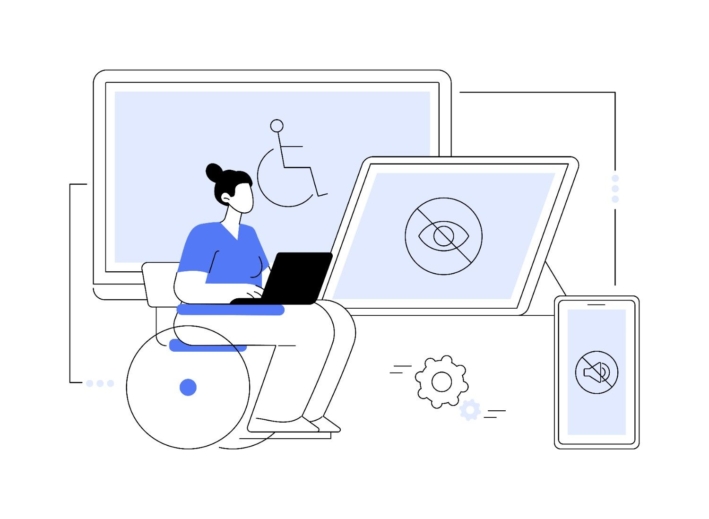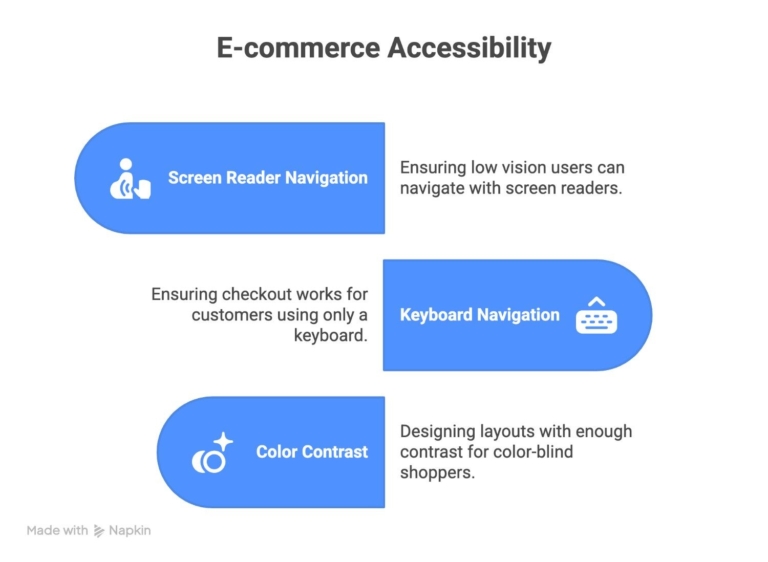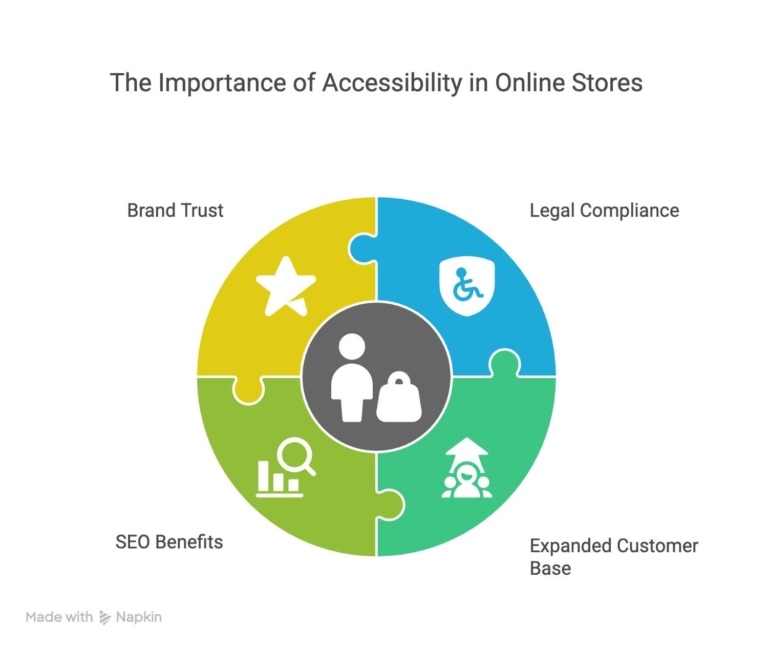Greetings! I'm Aneesh Sreedharan, CEO of 2Hats Logic Solutions. At 2Hats Logic Solutions, we are dedicated to providing technical expertise and resolving your concerns in the world of technology. Our blog page serves as a resource where we share insights and experiences, offering valuable perspectives on your queries.

If your store isn’t accessible, you could be losing sales without realizing it. Accessibility isn’t just a technical checklist, it’s about empathy. It’s making sure every customer, regardless of ability, can browse, shop, and complete a purchase with ease. Discounts and sales may attract people, but true customer care starts with ensuring they can actually use your store. That’s where e-commerce accessibility comes in. In this article, we’ll break down why it matters, how to check your site’s accessibility, and how to make improvements that pay off.
What is E-Commerce Accessibility?
E-commerce accessibility means designing and developing your online store so everyone can use it regardless of disabilities, age, or the device they’re on.
In practical terms, this could mean:

- Making sure someone with low vision can navigate your store with a screen reader.
- Ensuring your checkout works for customers using only a keyboard.
- Designing layouts with enough contrast for color-blind shoppers.
It’s a mix of accessible web design, thoughtful UX, and ongoing testing.
Not sure if your store is accessible? Let’s find out with experts.
Why Accessibility Matters for Online Stores

1. Legal Compliance
Making your e-commerce store accessible ensures you meet legal requirements. In the U.S., this means complying with the ADA (Americans with Disabilities Act), while in European countries, the EU Web Accessibility Directive and the European Accessibility Act (EAA) apply. Following WCAG (Web Content Accessibility Guidelines) standards helps you stay compliant and avoid lawsuits or penalties.
2. Expanding Your Customer Base
Globally, over 1.3 billion people live with some form of disability (WHO). If your store isn’t accessible, you’re excluding a huge segment of potential customers. Moreover it is about making your store inclusive.
3. SEO Benefits
Search engines reward accessible sites. Adding features like descriptive alt text, clear headings, and fast-loading designs can help your store rank higher.
4. Building Brand Trust
An accessible store shows customers you care about inclusivity, which builds loyalty and strengthens your reputation. People return to stores where they feel valued and receive great service, both online and offline.
If you’d like a clear breakdown of common accessibility issues in e-commerce and effective fixes, check out this detailed blog. Learn more
How Accessibility Impacts Sales & Conversions
The UK’s Click-Away Pound report found 69% of customers with access needs will leave a site they find hard to use. This means that’s a direct hit on revenue and repeat business. Accessibility reduces friction across the buying journey and keeps people moving from discovery to checkout.
How it impacts your:
- Higher cart abandonment: barriers in checkout forms and navigation stop purchases in their tracks.
- Lower repeat purchases: frustrated customers don’t come back.
- More support costs: customers who can’t complete tasks call support or request manual help.
- Poor SEO & discoverability: missing alt text, messy markup, and bad headings hurt organic traffic.
- Reputation risk: bad experiences lead to negative reviews and lost referrals.
Take a look at how to get solutions for these issues:
| Practical Fix | What It Does | Direct Effect on Sales |
|---|---|---|
| Simplify checkout forms | Makes the purchase process faster and easier for all customers | Reduces cart abandonment |
| Ensure keyboard-only checkout | Allows users without a mouse to complete purchases | Recovers customers who otherwise couldn’t check out |
| Add descriptive alt text & clear headings | Improves screen reader experience and SEO ranking | Increases organic traffic and product discoverability |
| Fix color contrast & increase tap target size | Makes content readable and buttons clickable on mobile | Reduces mis-clicks and accidental drop-offs |
| Caption product videos / add transcripts | Makes video content accessible for users with hearing impairments | Boosts engagement and conversions from product content |
| Provide accessible live chat | Gives all users a way to get help without friction | Recovers borderline buyers and increases trust |
Best Practices for Accessible Website Design
An accessible website design ensures every visitor can browse, shop, and complete a purchase without barriers. Here’s what to focus on:
1. Text Alternatives for Images
Screen readers can’t “see” images, so alt text is essential. Always write descriptive alt text for product photos, banners, and icons. If you have a large catalog, AI tools can help generate these descriptions, but review them manually for accuracy.
2. Color Contrast
Low contrast makes text hard to read, especially for customers with low vision or color blindness. Follow WCAG’s minimum ratio of 4.5:1 for body text. Free tools like Contrast Checker can quickly test your background and text combinations.
3. Keyboard-Friendly Navigation
Not all customers use a mouse. Some rely entirely on the keyboard or assistive devices. Make sure menus, filters, and the checkout process can be navigated with the Tab key and that each clickable element shows a visible focus outline.
4. Accessible Checkout
A complicated checkout can cost you sales. Keep forms simple, use clear labels, show inline error messages, and arrange fields in a logical order. Avoid adding unnecessary steps.
5. Mobile Accessibility
Responsive design alone isn’t enough. Test your store for touch targets that are large enough to tap, allow pinch-to-zoom for better readability, and ensure that interactive elements work with mobile screen readers.
6. Clear Heading Structure
Headings aren’t just for looks. They help users and screen readers understand your page layout. Use H1 to H6 in the right order without skipping levels.
7. Accessible Multimedia
If you use videos, animations, or audio content, add captions and transcripts. Also, give users controls to pause or stop autoplay elements so they can focus on what matters.
How Our E-Commerce Experts Ensure Accessibility
We build accessibility-first e-commerce stores that comply with WCAG standards, integrate AI for ongoing compliance checks, and ensure your online store is inclusive.
Whether you’re launching a new store or improving an existing one, we can:
- Conduct a full accessibility audit.
- Redesign with accessible website design principles.
- Shopware store accessibility
- Automate compliance monitoring.
Want to see how accessible your store really is?

Related Articles







